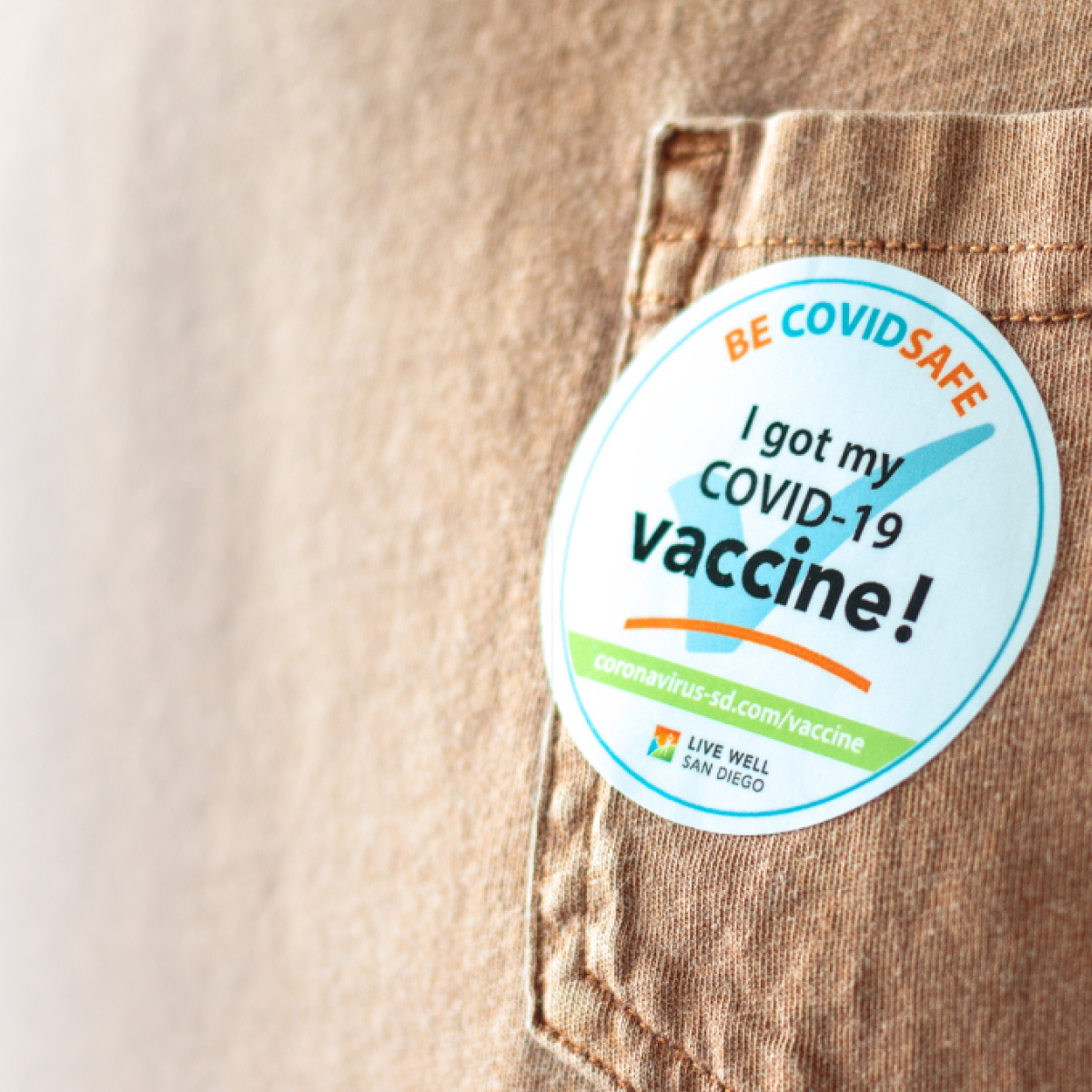President Joe Biden issued an executive order this month that will require large companies to mandate employees get vaccinated. Now, employers are scrambling to figure out how they’ll abide by the coming law.
Frustrated by America’s low vaccination rate and the surge of Delta variant cases, which have led to hospitalizations and deaths, the Biden Administration expanded mandatory vaccination requirements to federal workers, contractors, health care workers and all employers with more than 100 employees. Those companies must require their employees to be vaccinated or implement at least weekly COVID testing—otherwise face fines of up to $14,000. Remote workers are exempt.
In the coming weeks, the Occupational Health & Safety Administration will issue details on the “emergency temporary standard,” or ETS—which is used when there is “immediate danger” for all employees throughout the country or a specific industry.
“I’m telling people not to get all spun up yet, because there’s not much you can do until the ETS is defined and released,” says Chuck Simikian, principal of Alliance HR Partners, an Orlando HR consultancy.
Yet employers can understand what the mandate means and take small steps today to be prepared for whatever transpires in the coming weeks and months.
Expect Legal Challenges
The federal mandates will surely face controversy and legal challenges. Anti-vaxxers have called for boycotts of companies that support the mandate, and tensions have risen inside offices between the unvaccinated and the vaccinated. A recent study by the Society for Human Resource Management, however, found that about 28 percent of employees say they’d rather quit their jobs than get vaccinated, if their employers mandated it.
Adding to the confusion: The Republican attorney general of Arizona has already filed a lawsuit to stop the federal mandate. Montana recently passed a law forbidding vaccine mandates, leaving hospitals and businesses bewildered on how to proceed amid conflicting laws. Wyoming Gov. Mark Gordon has vowed to fight the federal mandate, and Florida Gov. Ron DeSantis has said he would fine any city that imposed mandates.
It’s also likely that employers will challenge OSHA’s seemingly arbitrary threshold of 100 employees. Those with fewer employees may be exempt. “What’s the difference between 99 employees and 100?” asks Simikian. “A judge may say it doesn’t make sense.”
Wait for answers to more questions.
Plenty is still unknown, which makes it difficult to plan. Will employers be responsible for documenting vaccinations? Will there be reporting back to OSHA? What type of testing will be used? Will exemptions be available to those with religious or medical accommodations who are protected under the Americans with Disabilities Act?
Earlier this summer, Delta Airlines asked workers to vaccinate or face hiked insurance premiums and limited sick days. It was a smart move, says Simikian. “It’s the carrot and the stick,” he says. And people can’t say they don’t get a choice.
Companies must ultimately decide whether employees can opt out of vaccines and instead do weekly testing—or if it’s easier to simplify and require it for everyone. If a company chooses the former, it will likely face logistical challenges of implementing company-wide testing for what could be a big chunk of the workforce.
Cost is a big concern. Employers legally must pay hourly workers for the time they spend getting tested each week. And it’s not clear who will cover the costs of such testing—the employer or the government. Insurers aren’t required to cover workplace COVID-19 testing, but rather just tests ordered by a doctor or tests for when someone is exposed to an infected person.
The mandate will take the heat off employers.
Delta, Walmart, United, Microsoft and Disney may have made bold moves in recent months to implement their own vaccine mandates. But other companies have been slow to bring down the hammer. The new federal mandates remove much of the guesswork and risk over whether or not to impose a mandate.
“HR and CEOs should feel relieved,” says Marc Sherman, an attorney and partner at Conway, Farrell, Curtin & Kelly in New York. They can now say, ‘the federal government is requiring it; it’s the law and we have no choice.’
And for smaller employers that want to impose their own requirements, it removes the risk: the law is on their side.
Some good news: If employees must upload some proof of vaccination, then a company will be more aware of what proportion of their workforce is vaccinated and unvaccinated, says Dr. Rachael Piltch-Loeb, a Harvard fellow and associate research scientist at the NYU School of Global Public Health.
The rates of breakthrough cases—positive cases among the vaccinated—are not equivalent to rates of cases among the unvaccinated. Transmission among vaccinated people is significantly less and the transmission period lasts for a shorter amount of time than with the unvaccinated. So the proof of vaccinations and routine testing can add a layer of understanding about the status of the virus among the workforce, she said.
Employers, while awaiting details from OSHA, can take some small steps now to be better prepared for what’s ahead.
- Appoint a COVID champion. Companies can start by appointing an internal COVID champion to manage the process. This person can set a budget and figure out logistics.
- Survey employees. Understand how many are vaccinated and who is planning on vaccinating and who will not vaccinate. This data can jumpstart rough estimates for how many weekly tests will be needed and at what cost.
- Line up outside help. Begin a search for outside vendors that can assist with the testing. Set up your system and third-party companies now to be ready for whatever deadline OSHA imposes.
- Get HR teams trained. If handling testing internally, then identify any training that staff will need, whether it’s how to do nose swabs or abiding by relevant federal health privacy laws.
- Explain the rule verbally, versus a written message. Explain the new rules to your employees in a live, town-hall Zoom call or in smaller, individual group conference rooms. An all-user email is not the way to go for such a hot-button topic.
- Be concise and avoid conflict. Quote OSHA policies and reiterate that the rules have been “imposed upon us” for everyone’s safety, says Sherman, who also fields such legal questions as a legal expert on JustAnswer.com. Steer conversations away from arguments about constitutional rights or personal liberties, and avoid indulging or expressing sympathy in those opinions—or expressing your own opinions. Company leaders aren’t constitutional experts and, ultimately, it’s a moot point, says Sherman. “You don’t want it to be management versus workforce.”
- Make the vaccine accessible. The Centers for Disease Control recommends sharing clear, complete, and accurate messages about the vaccine, promoting confidence in the decision to get vaccinated, and engaging your employees in plans to address potential barriers to vaccination. Administering the vaccine on site, however, could create liability concerns for a company, says Sherman. Even though it’s merely a jab, it’s wise to outsource the job to a nurse or medical agency under a contract that indemnifies the employer for any mishaps.
- Plan for a new system to track vaccinations. Although it’s not clear whether employers will be required to collect proof of vaccination or report testing results back to OSHA, company leaders can begin thinking about systems and logistics for the mandate.
The debate over vaccinations and the constantly changing state of the pandemic makes it difficult to lead. But companies that begin preparations now may find a less bumpy roadmap for a safer and less chaotic future.


